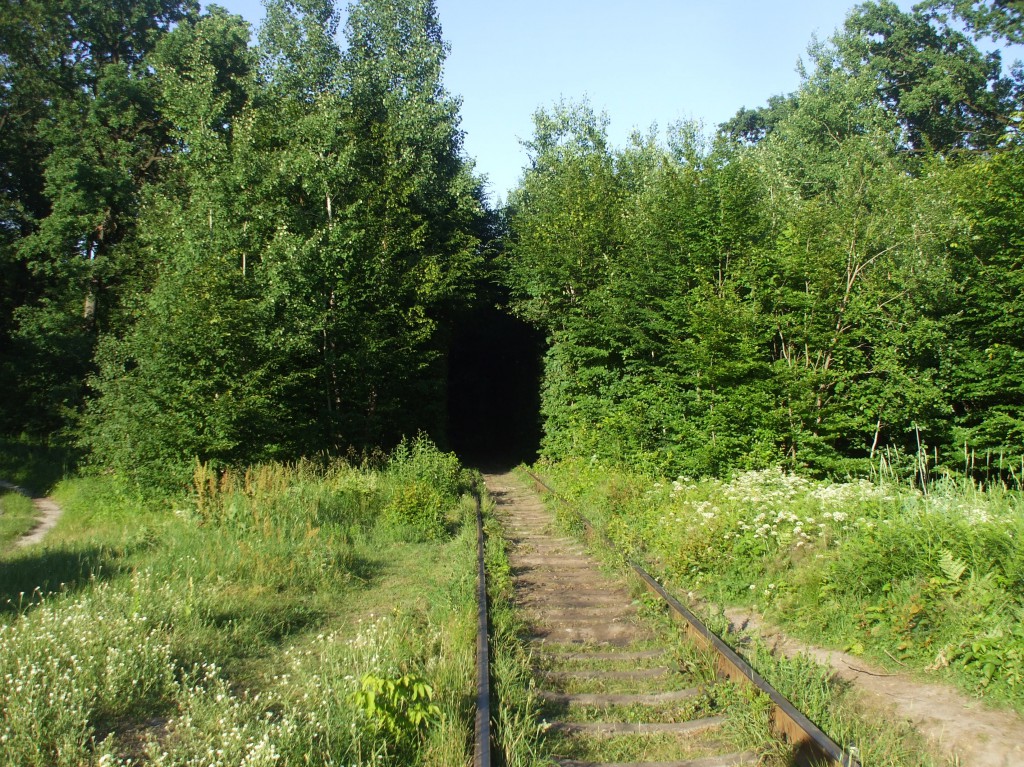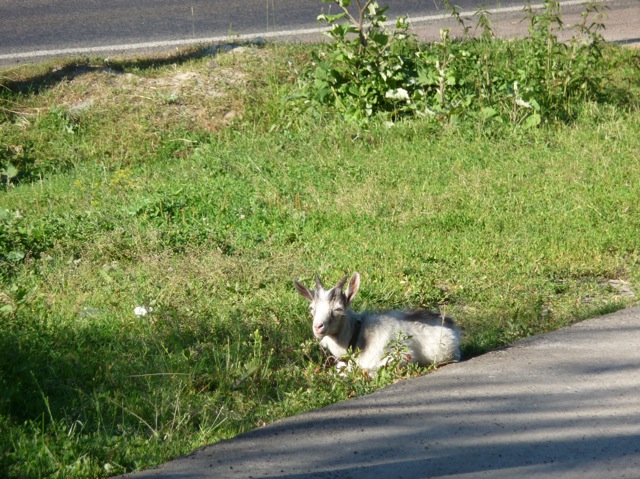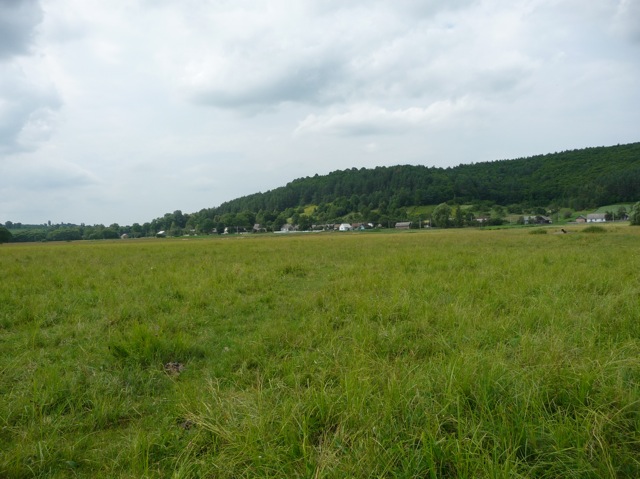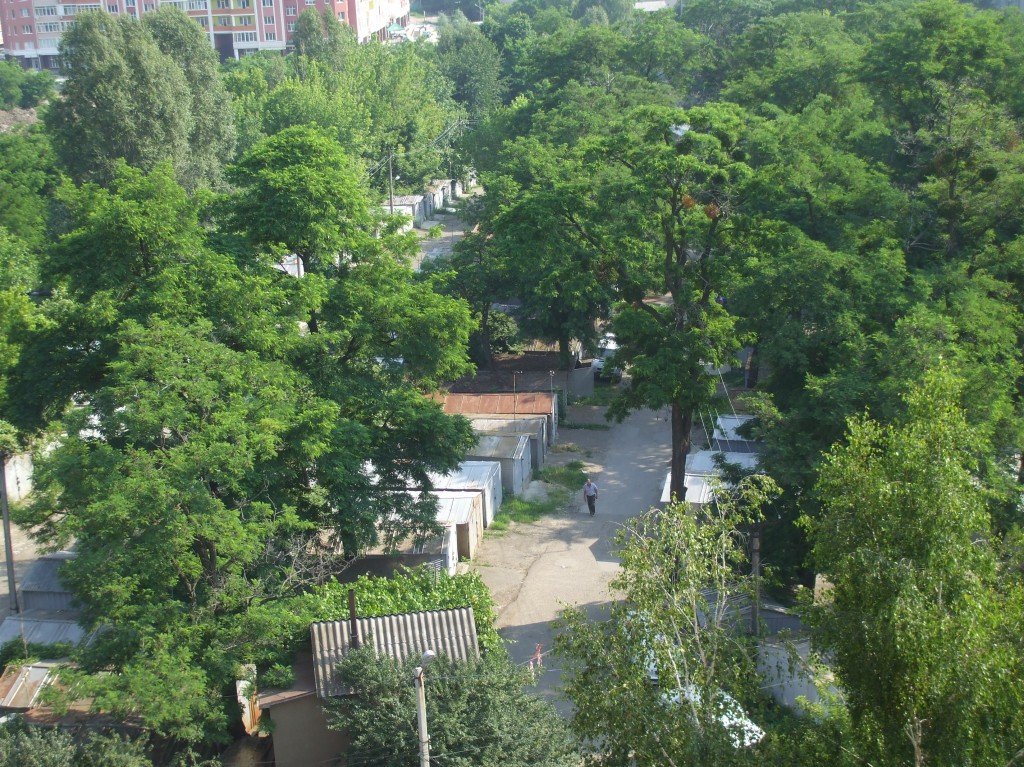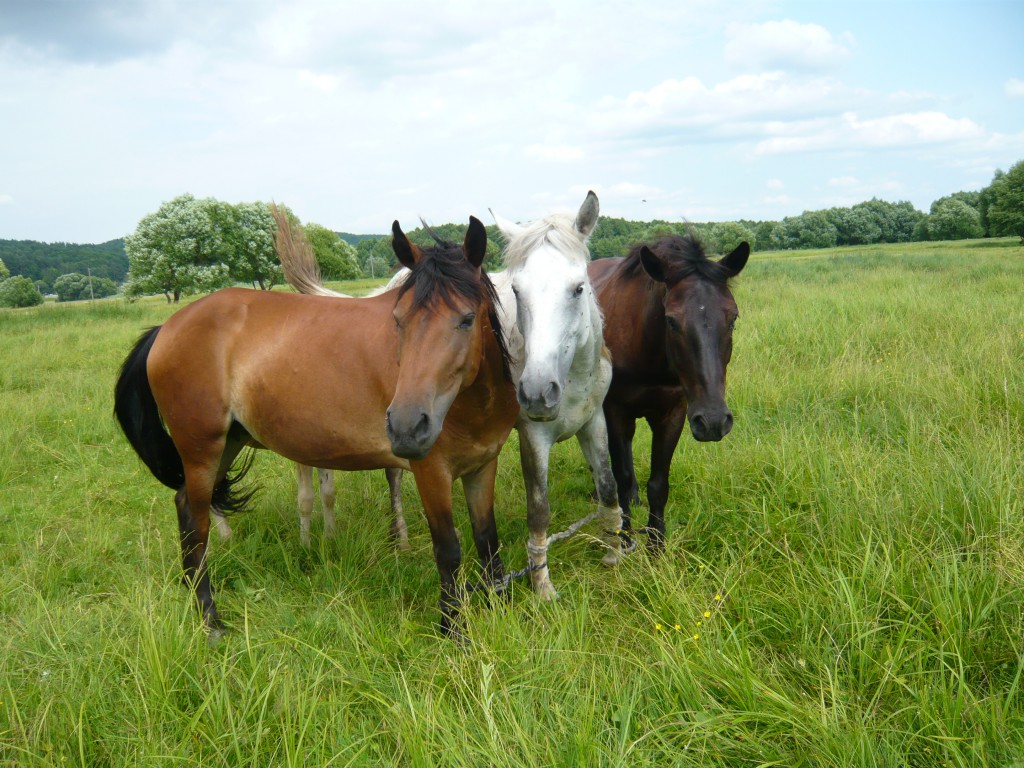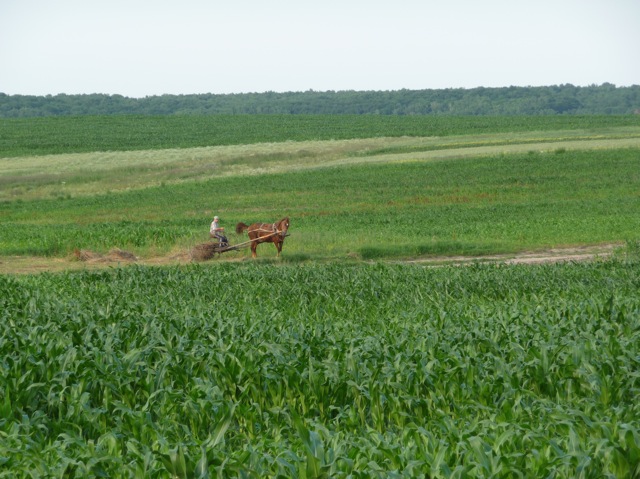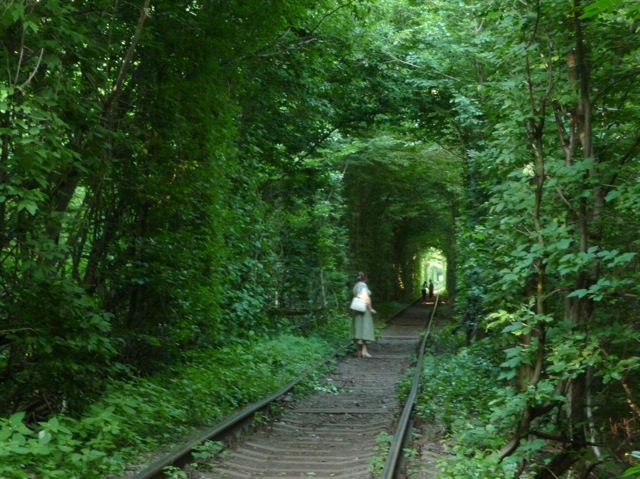We have just returned from a two-week mission trip to Ukraine, and it was an amazing privilege. Setting out now to convey something of what we experienced, I realize there is no way to tell the tale all at once. This, then, will be the first of several reports, wherein the things we saw and did will be organized more by topic than by chronology. I will attempt to present something of a verbal photo album of stories and images that, I hope, will gradually give you a picture of what our time there was like.
The name of Ukraine is based on a word that means “the edge” or “the border,” and it seems to me that this ancient land lives up to the name. Ukraine is the realm “Out There,” the wide, mysterious zone where political boundaries have changed, invaders have come and gone, and the human presence itself seems a small part of the vast, timeless province of trees and fields, of rivers and winds and the enormous sky.
Our team arrived at midsummer, when the sun rises between 5 and 6 a.m. and does not set until nearly 10 p.m. — a time of glorious light and heat and singing insects. In the villages, tiny frogs no bigger than a fingernail hopped across the dooryards. In the meadows, cows and horses grazed. In the city of Rivne, stray dogs and cats wandered the streets and lounged in the shade.
Earlier in the month, when Julie visited Illinois, she said more than once that it reminded her of Ukraine, except that in Ukraine, the grain elevators would be Orthodox churches. When I saw Ukraine, I certainly noted the similarities to my home state: lots of farmland; mostly flat country to the horizon; natural beauty; and black, fertile soil. (In fact, during Hitler’s time, the Fuhrer had slave laborers filling boxcars with rich Ukrainian earth to haul back to Germany.) But there were differences, too. In Ukraine, everything seems to extend farther. The roads are longer; the fields are wider, the forests deeper. It’s farther to the next ridge or the next town. Ukraine is a giant country with lots and lots of land. The predominant oak and maple of central Illinois are, in Ukraine, birch, willow, and linden.
My facetiously-expressed first impression of Ukraine was that it reminded me of Japan: a Japan from which the Japanese had been evacuated, the country left to stand empty and unattended for about twenty years, then filled with Ukrainians and handed over to them to inhabit. By that I meant that there were obvious similarities in the communal living and many of the physical structures, the appearances of the gardens, the winding streets laid out in pre-automobile eras . . . but that, in general, flora in Ukraine seemed to be given a freer rein to grow unchecked; on the whole, buildings and roads seemed more dilapidated. The regimented order of Japan was, here, objects stacked at random and allowed to return to nature. It is perhaps telling that the first sentence I learned in Ukrainian involved the word “pile,” and the man who taught it to me advised that “pile” or “heap” is a useful and often-heard word in Ukraine. Examples: in the cities, the balconies of apartments often seem to function as sheds, bearing mounds of lumber and castoff furniture. In the villages, there are wood piles for the stoves, but there are also mounds of crumbly rock in many of the yards. These testify to building projects that have been abandoned, but which might again one day be taken up.
Cities abound with playground equipment and park buildings, benches, statues, etc., that were shiny and new about 1980; but since the dissolution of the Soviet Union, these have all fallen into disrepair. Weeds grow through cracks in the pavement; edges have crumbled, pieces are missing, and rust scars the surfaces. Most public parks are not mowed or groomed. Capitalism has brought rampant unemployment and urban decay.
I was impressed by dramatic differences in the landscape of western Ukraine. After gliding along through panoramic vistas of meadows ablaze with wild flowers and cemeteries recently decorated for Easter, roads plunge into dark forests where gnomes might lurk in the shadows. In places, the trees form tunnels, leaning over the passage from the atop embankments. Valleys wander along for miles, dotted with villages. The breeze rustles through endless fields of sunflowers, though these were not yet in bloom during our visit.
The five-hour trip along the highway from Kyiv (Kiev) to Rivne was an enlightening introduction to the country. Many of the cars are Russian-made; I saw some French and Japanese autos, but few of the familiar U.S. models. Highway exits to the left involved a turn across traffic (through a gap in the center median) into a widened turnaround area; the driver then would backtrack in the opposite direction until s/he could turn right. This system eliminates the need for extensive ramps and cloverleafs.
Here or there, a horse would be standing on the shoulder of the road. We saw the remains of collective farms from the Soviet era — large abandoned buildings and weed-grown berths for loading trucks. (The laws in Ukraine make it impossible for local people to own large farms; each Ukrainian is allotted a couple acres, too small a tract to allow for much income or investment in machinery. So the farming we saw was done almost entirely by horse-drawn equipment, quite often operated by children. It is a common sight to see a twelve-year-old boy driving a hay-rake or a seven-year-old girl escorting the cows back from the pasture.)
For many miles along this main route, people had set up stands for selling honey and other home-grown products, and especially bundles of leaves (birch or oak) with a special use: in the banya (Russian saunas), bathers flog themselves or others with these bundles for cleaning and to improve circulation.
We frequently observed a goat tethered in a backyard or on a verge beside a roadway, eating its fill of the plants. Another typical sight was a group of shirtless men working in a field, sometimes in company with a woman or two, all wearing only just enough clothing to be modest.
In nearly all instances, signs are written in Cyrillic. (Ukraine has its own language, but in many parts of the country, Russian is more commonly spoken).
When the road leaves a particular area, the place’s name is shown on a signboard with a red slash through the name.
A writer friend of ours in Pittsburgh sometimes talks and writes of the “absolute summer” we half-experience as children, or dream of at least: that time of freedom and natural abundance when the light is at its warmest and strongest, when the trees are in fuller leaf, when the flowers are more resplendent and the grass is greener than it ever actually gets in the adult world. Again and again on this trip, I had the sense that Ukraine is closer to this absolute summer than any other place I’d seen.
In Japan, nature felt pinched and confined, the roots cramped. When I would return to Illinois, I could always feel my soul expand into the wide air, into the soil and the woods. In Ukraine, the wildness is many degrees beyond even that of the Midwest. If ever a land adjoins Faery, I suspect that it is Ukraine, the Edge.
In wrapping up Part I of this chronicle, I will leave you with a story from our second day (our first full day in the country). Our team leader, Greg, drove us to a famous stretch of train tracks near Rivne called “The Tunnel of Love.” Here, an old length of railroad shoots away into the deep woods, and the forest has grown around the passage in curved walls and a ceiling of greenery — a living tunnel. This was a pretty amusing actual conversation:
Greg: This is an amazing place. The way the woods grow, there’s no room for anything but the train. Come on, we can walk along the tracks.
Julie: Are these tracks still in use?
Greg: Yeah, they still run a train on them every day.
Julie: At about this time of day?
Greg: Oh, I don’t know.
[We hike along the tracks where there’s not an inch of space for anything but a train to pass. The circle of daylight at the crossing behind us gets farther and farther away. We take some pictures and are being devoured by mosquitoes. Heading back, we hear a train whistle and the rumble of a locomotive. We pick up our pace considerably. The train turns out to be on a different track in the distance, but it’s been a hair-raising few minutes!] Fascinating and beautiful place! Other tourists think so, too; other carloads of people were also strolling along the tracks at the same time we were.
For an excellent look at the landscape, history, and spirit of Ukraine, I recommend the movie Everything Is Illuminated. (I’m sure the book is of great value, too, though I haven’t read it; the movie is based on the book.)
Stay tuned for Part II!
